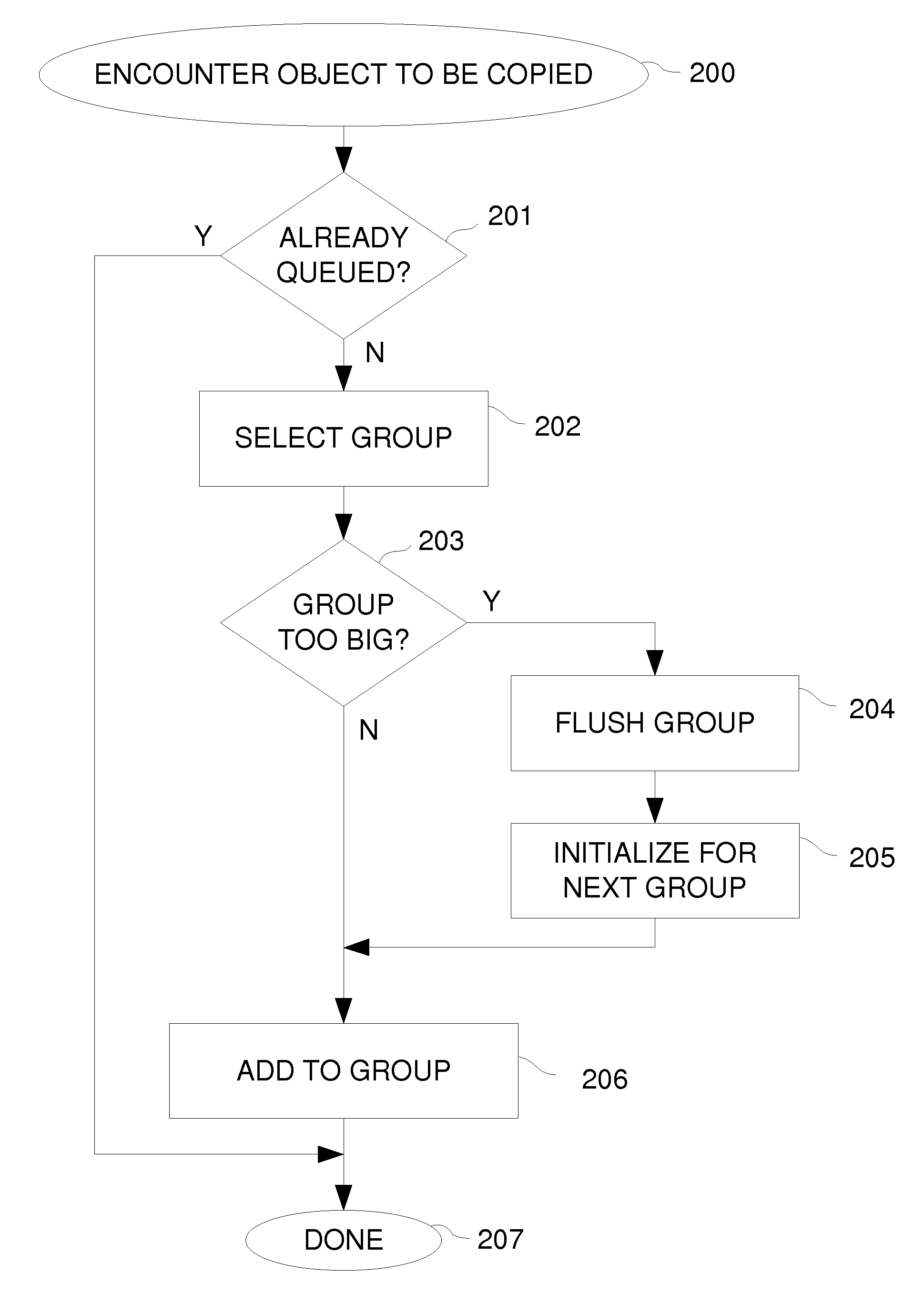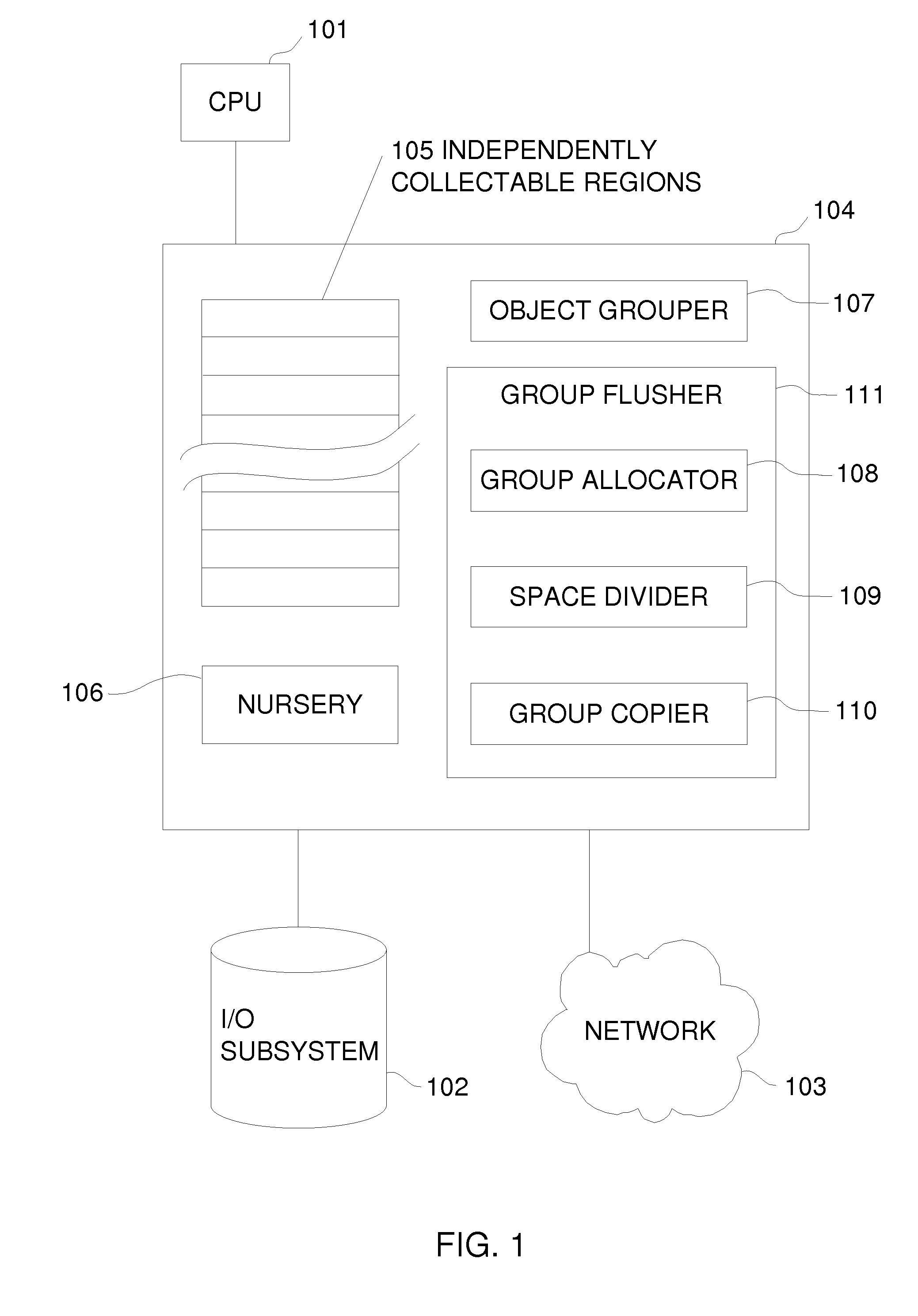Grouped space allocation for copied objects
a grouping space and object technology, applied in the field of memory management in computer systems, can solve the problems of increasing overhead of lab-based memory allocation, increasing lab-based memory allocation, and increasing the number of labs, so as to achieve efficient allocation of many small objects, without incurring overhead.
- Summary
- Abstract
- Description
- Claims
- Application Information
AI Technical Summary
Benefits of technology
Problems solved by technology
Method used
Image
Examples
Embodiment Construction
[0025]FIG. 1 illustrates a computer system according to a possible embodiment of the invention. (101) illustrates one or more processors (each processor may execute one or more threads), (102) illustrates an I / O subsystem, typically including a non-volatile storage device, (103) illustrates a communications network such as an IP (Internet Protocol) network, a cluster interconnect network, or a wireless network, and (104) illustrates one or more memory devices such as semiconductor memory.
[0026](105) illustrates one or more independently collectable memory regions. They may correspond to generations, trains, semi-spaces, areas, or regions in various garbage collectors. (106) illustrates a special memory area called the nursery, in which young objects are created.
[0027]In some embodiments the nursery may be one of the independently collectable memory regions, and may be dynamically assigned to a different region at different times. The division between memory regions does not necessar...
PUM
 Login to View More
Login to View More Abstract
Description
Claims
Application Information
 Login to View More
Login to View More - R&D
- Intellectual Property
- Life Sciences
- Materials
- Tech Scout
- Unparalleled Data Quality
- Higher Quality Content
- 60% Fewer Hallucinations
Browse by: Latest US Patents, China's latest patents, Technical Efficacy Thesaurus, Application Domain, Technology Topic, Popular Technical Reports.
© 2025 PatSnap. All rights reserved.Legal|Privacy policy|Modern Slavery Act Transparency Statement|Sitemap|About US| Contact US: help@patsnap.com



